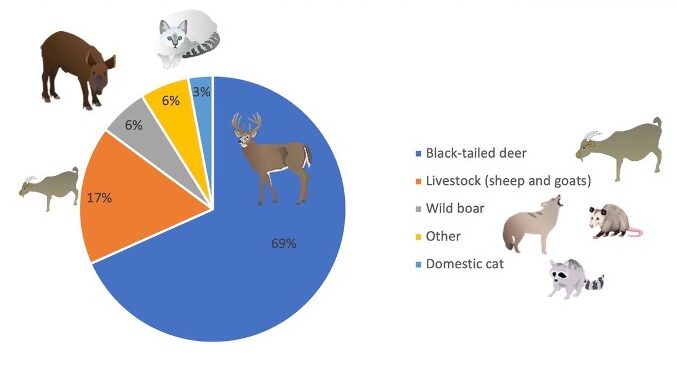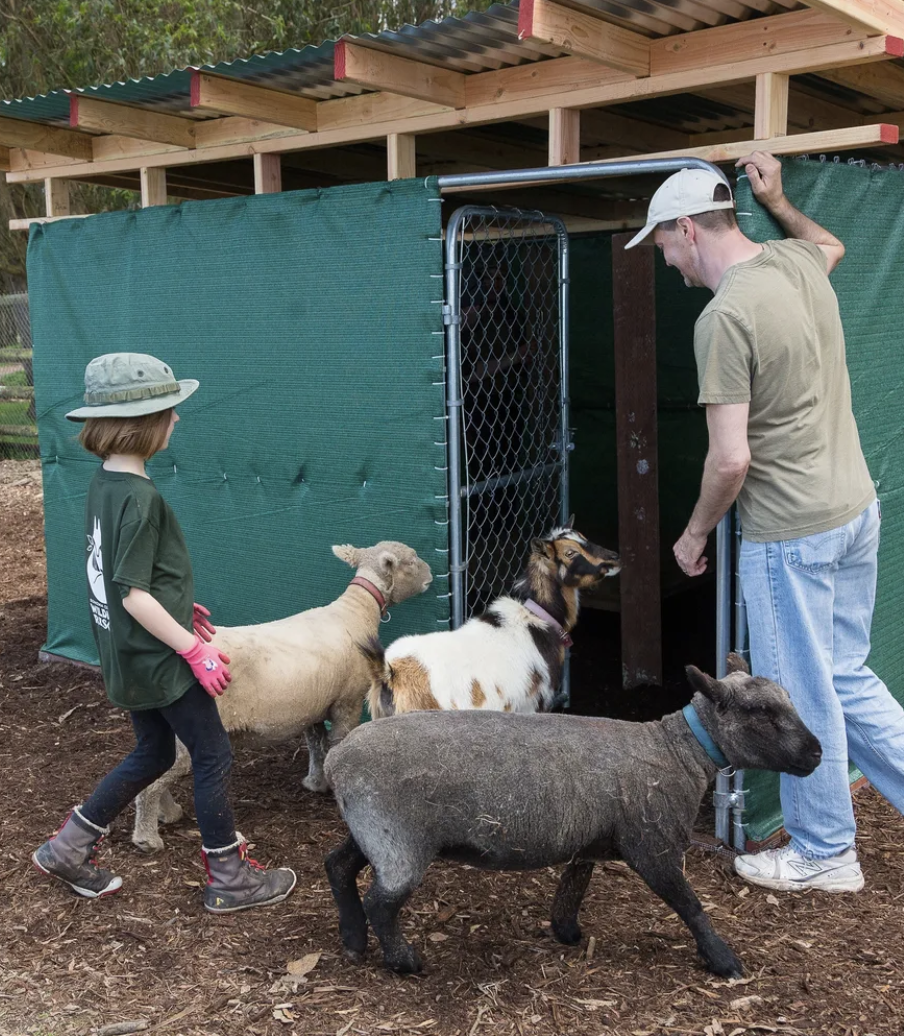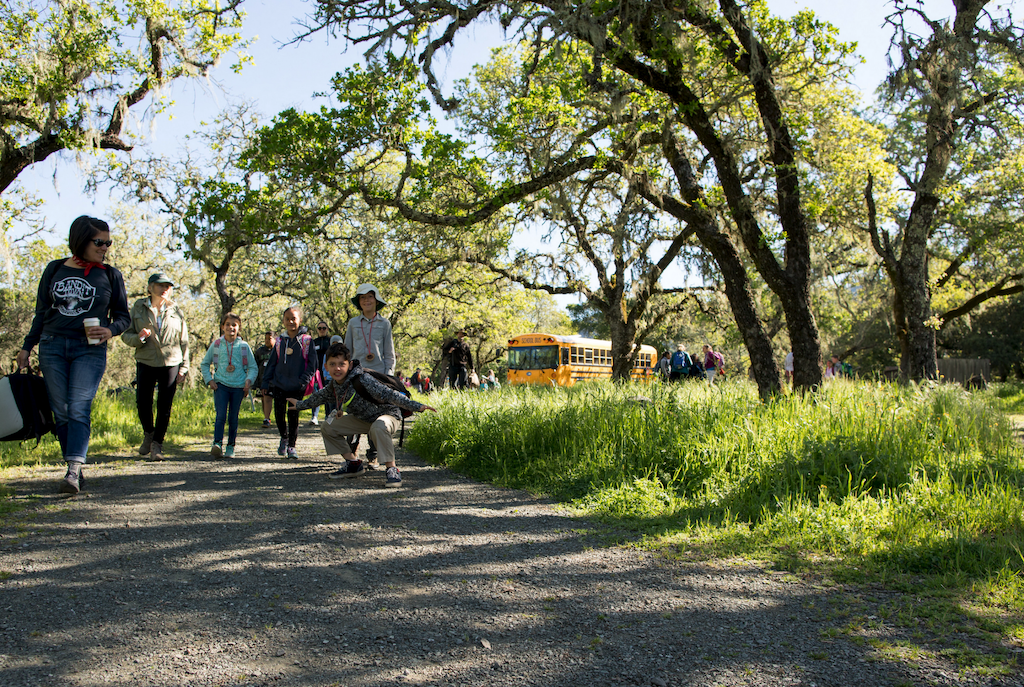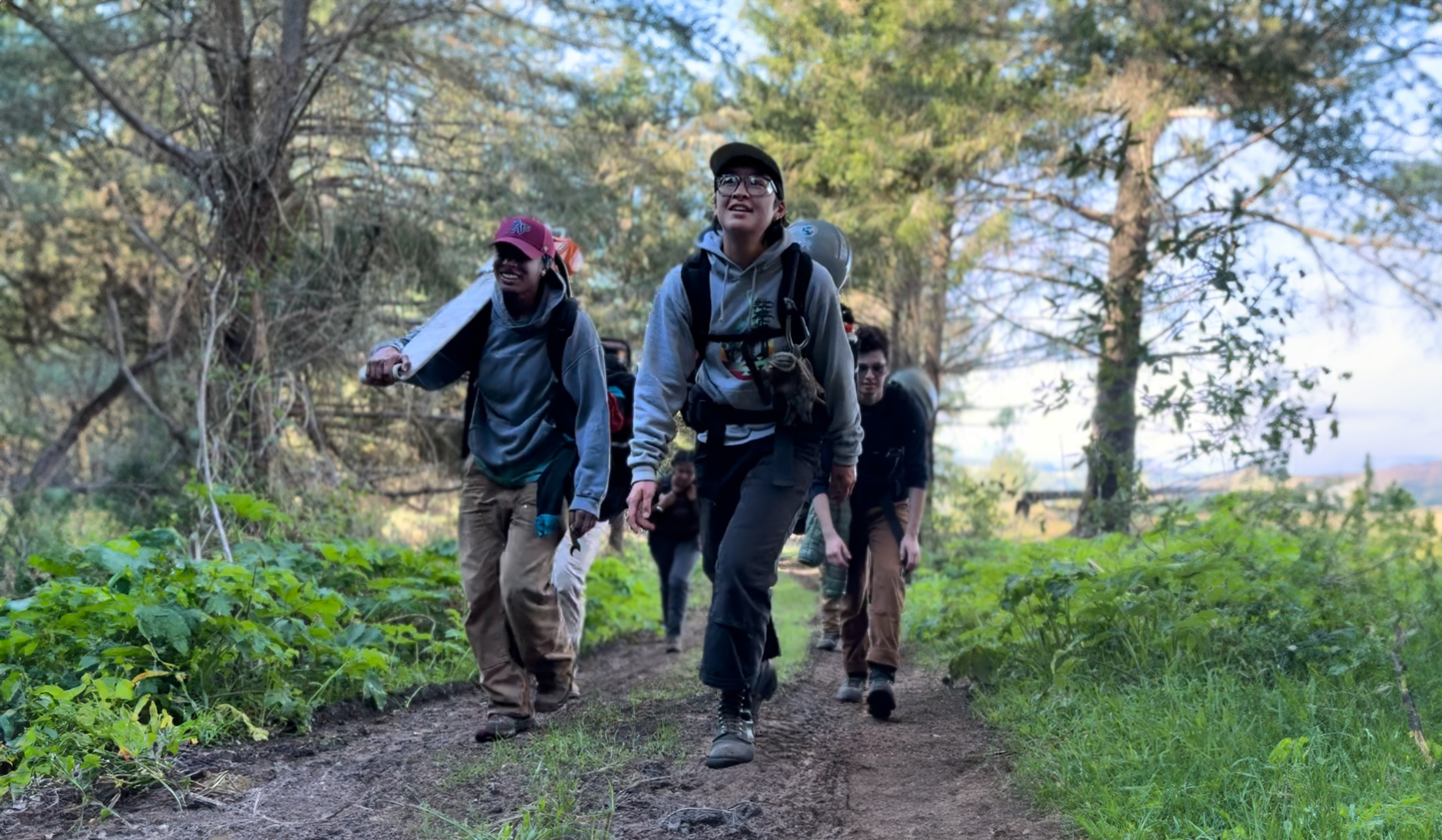Understanding the diet of mountain lions in San Francisco North Bay
Recent studies by Audubon Canyon Ranch and True Wild of what mountain lions eat and the ways they interact with their prey is shedding light on these elusive predators in the San Francisco North Bay region. Through the analysis of satellite data and field observation, our researchers are gaining a better understanding of the dietary preferences and challenges faced by mountain lions. This research has revealed intriguing insights into the prey choices of mountain lions, emphasizing the need for effective animal protection measures to mitigate conflicts between humans, livestock, and wildlife.
Insights into mountain lion diet and hunting behavior
Over the past year, our data has shown that black-tailed deer account for approximately 68% of the prey items recorded in the diet of mountain lions. This finding underscores the crucial role played by black-tailed deer as a primary food source for these predators. The study identified other prey species such as wild boar, coyotes, opossums, badgers, and even an otter. It is important to note that the high percentage of livestock (17%) in the diet was influenced by the presence of a female mountain lion, P1, who suffered a debilitating injury from a gunshot wound and was later killed after depredating livestock. House cats (3%) were targeted by specific lions, indicating the potential threat posed to domesticated pets, as well as the threat of disease transmission from pets to mountain lions.

The presence of fences appears to have an impact on lion hunting behavior. Lions seem to gain some benefit from the presence of high-density fencing, which can act as barriers or hurdles to deer, enabling lions to improve their foraging success. We have determined that lions are making kills about 280 feet from fences on average and we have, on several occasions, found deer (or livestock) caught up against fences.

Inadequate predator-proofing endangers both livestock and wildlife
In California, “hobby farmers” or landowners with small numbers of livestock are considered the primary threat to mountain lions (Benson et al., 2024) due to inadequate protective measures against predation from wildlife. This emphasizes the need for proactive measures to safeguard domesticated animals and promote coexistence.
Protect pets like cats and small dogs by keeping them indoors at night, when mountain lions are most active. For small livestock such as sheep and goats, predator-proof pens provide a secure space during the night. While mountain lions are primarily nocturnal, the level of risk may vary depending on location, habitat, and specific threats. Collaboration between organizations like True Wild and Sonoma County Wildlife Rescue (SCWR) has resulted in innovative solutions, such as the development of automated pen systems that enable people to secure their farm animals remotely.

With these efforts, we can foster harmonious coexistence between humans and wildlife in the San Francisco North Bay region.




